Baby Food Autism Lawsuit
Children’s Brain Health at Risk: The Growing Baby Food Contamination Crisis

Understanding the Connection Between Toxic Baby Food and Autism
Recent findings reveal a alarming correlation between contaminated baby foods and the rising prevalence of autism spectrum disorder (ASD) in children. This article explores the scientific evidence, legal battles, regulatory responses, and protective measures surrounding heavy metal exposure in infant foods, emphasizing the urgent need for public awareness and regulatory overhaul.
Heavy Metals in Baby Food: Types and Health Risks
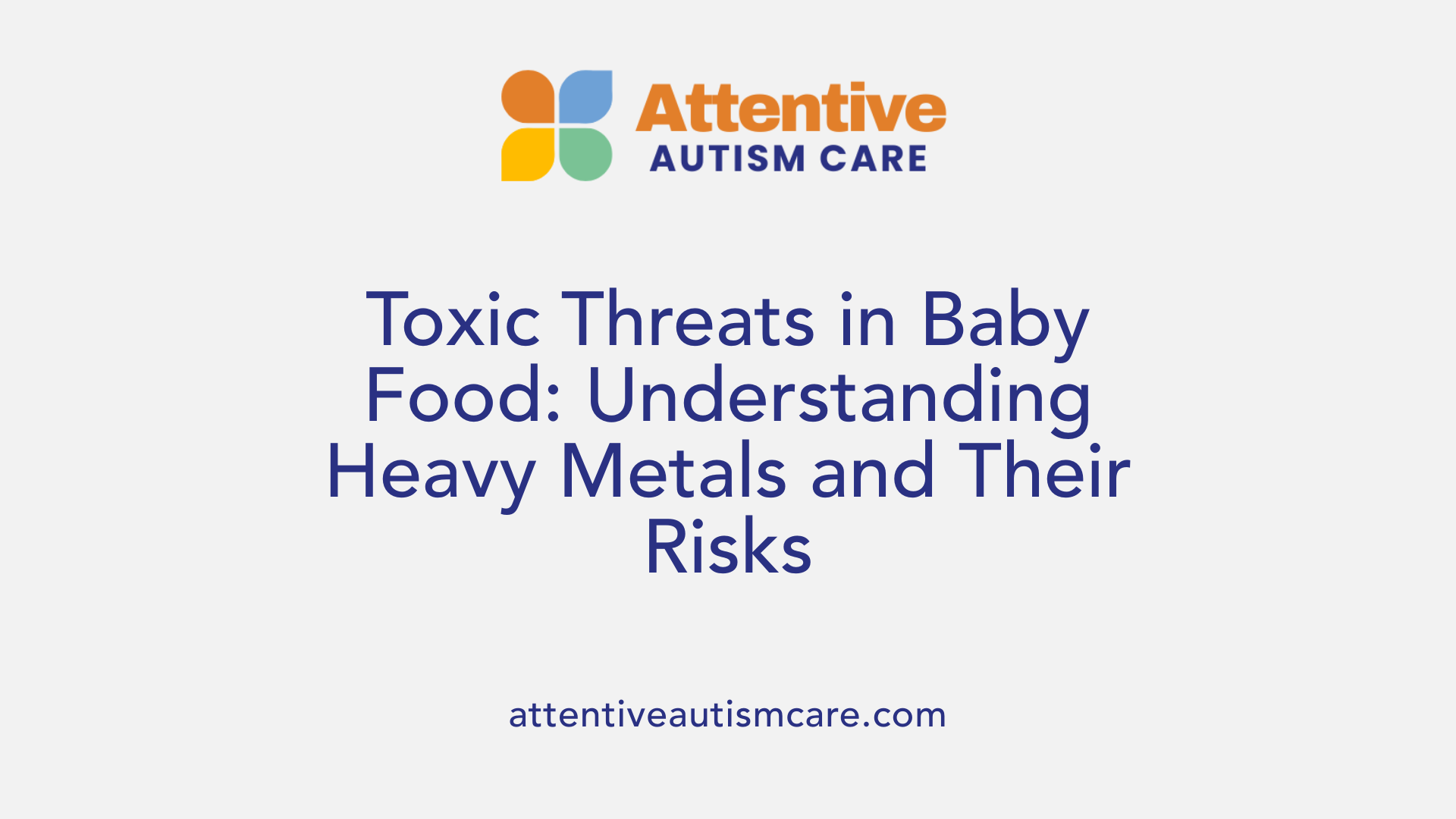
What types of heavy metals are commonly found in baby food, and what are the associated health risks?
Heavy metals such as arsenic, lead, mercury, and cadmium frequently appear in baby foods. These toxic substances can enter products through natural sources like contaminated soil and water or during manufacturing and processing stages. Because of their neurotoxicity, these metals pose serious health risks, especially to developing infants.
Arsenic is often found in rice-based products because rice plants tend to absorb it from the soil more readily than other crops. Lead can contaminate baby foods via environmental pollution or contamination of raw ingredients. Mercury, primarily in the form of methylmercury, can be present in seafood ingredients or contaminated water supplies used during cultivation. Cadmium, a heavy metal absorbed from contaminated soil and fertilizers, is also found in some root vegetables and cereal products.
The health implications of exposure are profound. Exposure to these metals is linked to neurodevelopmental delays, including cognitive impairments and learning difficulties. Behavioral problems, such as attention deficits characteristic of ADHD, have also been associated with heavy metal toxicity.
In high doses, or with chronic exposure, these metals can increase the risk of cancers and damage to various organ systems. The early childhood period is particularly sensitive, as developing brains are extremely vulnerable to neurotoxins.
Many baby food products, including organic and conventional brands, have been found to contain varying levels of these toxic elements. While most tested products are within regulatory limits, some, especially rice cereals, fruit juices, and root vegetables, have posed concerns due to their higher concentrations.
Regulatory agencies such as the FDA are aware of these risks and have issued voluntary guidelines aimed at reducing heavy metal levels in baby foods. They encourage manufacturers to limit contamination and promote regular testing.
Parents are advised to diversify their child's diet to limit reliance on high-risk foods like rice cereals and fruit juices. Testing water used in preparation, choosing a varied menu, and washing produce thoroughly can help reduce heavy metal ingestion.
Overall, ongoing research and regulatory efforts aim to better understand and diminish the presence of heavy metals in baby foods, safeguarding infants’ health from this hidden threat.
Scientific Evidence Linking Baby Food Contamination to Autism
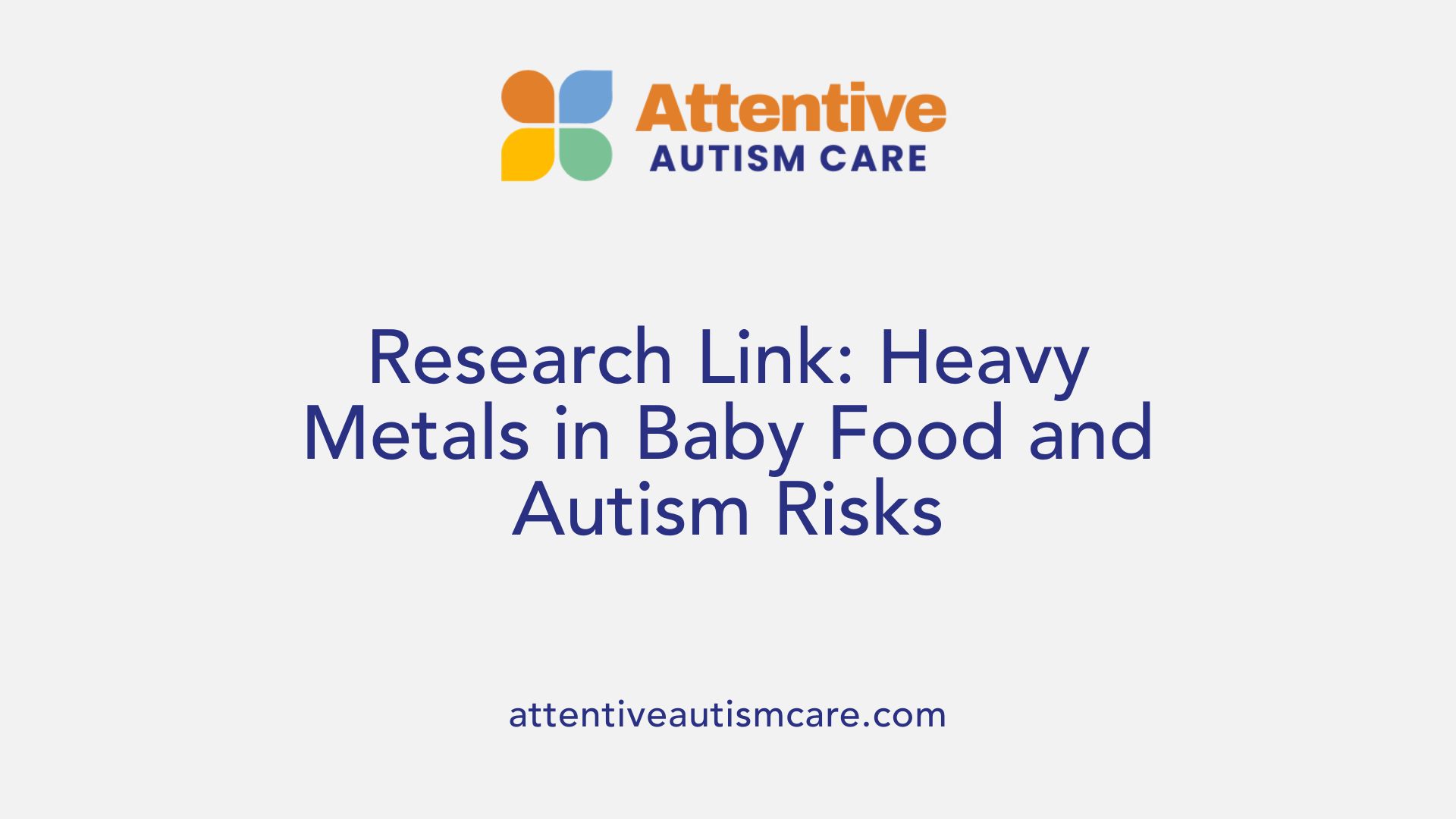
What current scientific research links baby food contamination with autism or developmental issues?
Recent scientific investigations have brought to light concerning findings about heavy metals in baby foods. Studies reveal that many products contain unsafe levels of arsenic, lead, mercury, and cadmium — all known as neurotoxins.
Infants and young children are particularly susceptible because their brains are rapidly developing during these early years. Exposure to heavy metals during this critical period can interfere with normal brain growth, leading to potential neurodevelopmental delays.
Multiple research efforts and reports have flagged this issue. For instance, a 2021 Congressional report found widespread contamination in popular baby food brands, with some products containing arsenic, lead, cadmium, and mercury above the recommended safety levels.
Organizations like Healthy Babies Bright Futures conducted testing across various infant foods and found heavy metals in approximately 95% of samples. These toxins are often present in rice cereals, fruit puffs, and snack foods favored by young children.
The scientific community has associated the presence of these heavy metals with adverse health effects. Exposure has been linked to lower IQ scores, behavioral problems, attention deficits like ADHD, and autism spectrum disorders.
Furthermore, epidemiological studies from Korea, Buffalo, and comprehensive meta-analyses confirm a correlation between early exposure to substances like mercury, arsenic, and cadmium, and increased risks of neurodevelopmental issues, including autism.
Although regulations set voluntary guidance levels, enforcement remains inconsistent. The FDA has issued advisories for maximum allowable heavy metal levels, but these are not mandatory standards.
Legal cases and ongoing investigations leverage this scientific evidence to establish causation, emphasizing the urgent need for stricter safety standards and transparency from food manufacturers. Families affected by neurodevelopmental disorders are actively seeking accountability, highlighting the real-world implications of these findings.
Legal Actions and Ongoing Lawsuits Against Baby Food Manufacturers
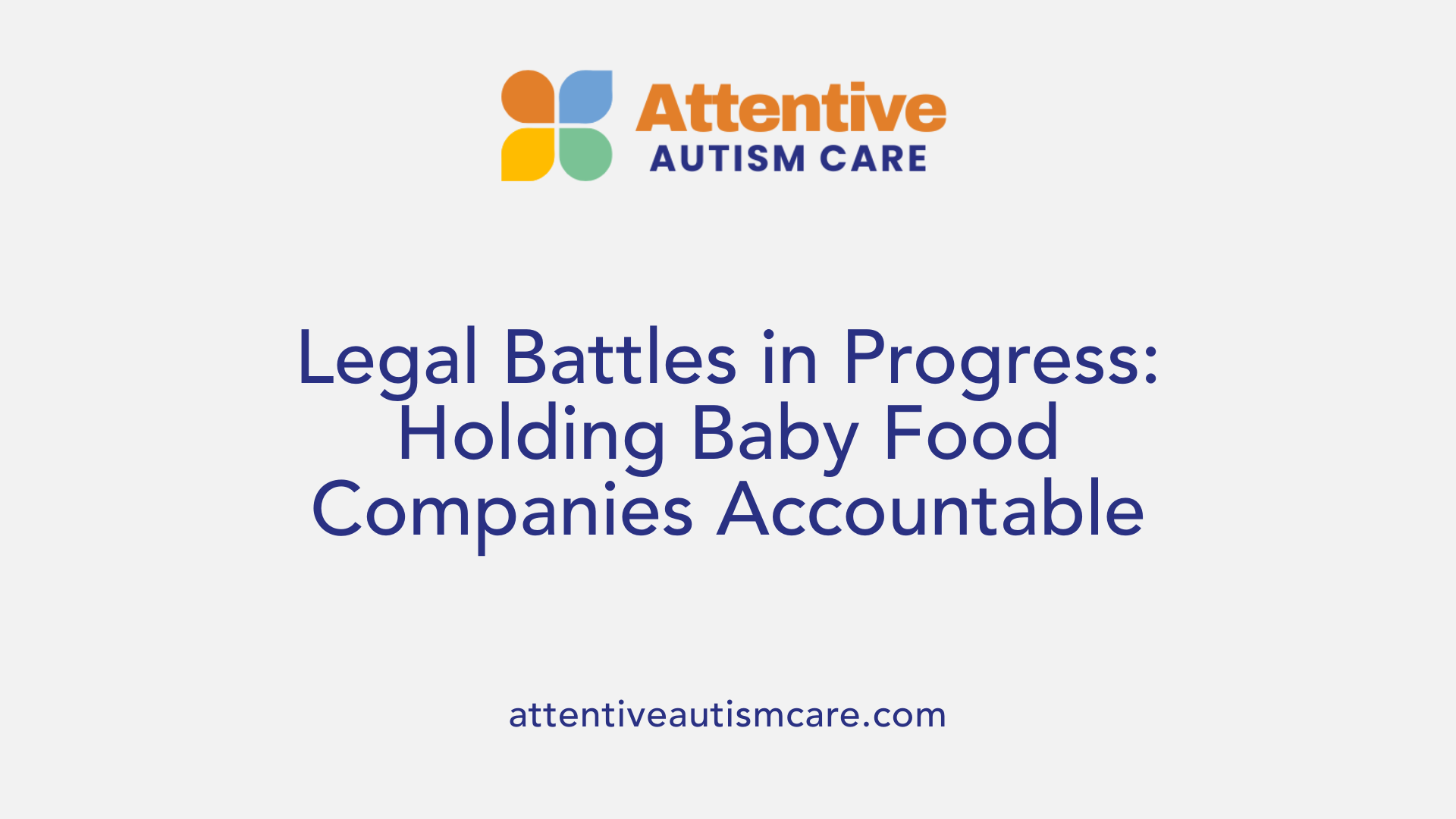
Are there ongoing lawsuits or legal actions against baby food brands related to heavy metal contamination and autism?
Yes, numerous legal actions are currently underway targeting baby food companies accused of selling contaminated products containing heavy metals such as arsenic, lead, cadmium, and mercury. Over 180 cases have been consolidated into a multidistrict litigation (MDL) in the Northern District of California, known as 'In re: Baby Food Products Liability Litigation.' This nationwide lawsuit involves claims that these babies' foods were unsafe and contributed to neurodevelopmental issues, including autism spectrum disorder (ASD).
Major brands like Walmart (under the Parent’s Choice label), Beech-Nut, Gerber, Earth’s Best Organic, HappyBaby, Plum Organics, and Sprout are defendants in these cases. The plaintiffs allege that these companies knowingly sold products with dangerous levels of heavy metals, despite internal and external awareness of these risks.
The legal claims are bolstered by extensive scientific evidence, congressional reports, and independent studies confirming that many baby foods exceed safety thresholds for heavy metals. A 2021 Congressional report revealed some products contain up to 177 times the legal limits for arsenic and other harmful toxins. These chemicals are known neurotoxins and have been linked to cognitive delays, behavioral problems, and autism.
Families across the country are filing lawsuits claiming that consumption of affected baby foods during early childhood led to their children’s diagnosis of autism or similar neurodevelopmental conditions. The litigation process involves expert testimonies, scientific analyses, and evidentiary proceedings to establish causation.
Recent updates indicate that the case activity is accelerating, with hearings scheduled for 2024 and 2025. Court decisions are increasingly recognizing the plausibility of claims that contaminated baby foods contributed significantly to children’s developmental disorders.
This legal movement also aims to hold corporations accountable for negligence and failure to warn consumers. Plaintiffs seek damages to cover medical expenses, therapy costs, and compensations for emotional distress caused by these health impacts.
Overall, the ongoing lawsuits reflect a broader concern over food safety standards and regulatory oversight, aiming to ensure manufacturers are held responsible for preventing toxic contamination in infant nutrition products.
Legal Strategies and Court Proceedings in Baby Food Toxicity Cases
What information is available regarding legal strategies and ongoing proceedings in baby food toxicity cases?
Legal actions surrounding baby food contamination focus heavily on holding manufacturers accountable for failing to ensure the safety of their products. Lawsuits primarily aim to secure damages for children diagnosed with autism and other neurodevelopmental disorders potentially caused by early exposure to toxic heavy metals like arsenic, lead, cadmium, and mercury.
Plaintiffs allege that companies such as Walmart, Beech-Nut, and Gerber committed negligence by not adequately testing or reducing heavy metal levels in their baby foods. Many claims also assert that these corporations failed to properly warn consumers about the risks associated with their products, despite internal knowledge of contamination issues.
The current legal landscape features extensive multidistrict litigation (MDL) in the Northern District of California, overseen by Judge Corley. As of mid-2025, over 85 lawsuits are consolidated under MDL 3101, with claims including defective manufacturing and failure to warn. The court has recognized that the inclusion of heavy metals at unsafe levels could render the products unfit for infants—a key factor in allowing these cases to proceed.
Ongoing proceedings involve various stages such as filings, expert testimony exchanges, and causation hearings. These cases leverage scientific evidence linking early heavy metal exposure to neurodevelopmental issues, positioning the lawsuits to potentially influence both legal precedent and public policy.
Legal strategies also include pursuing class action suits and detailed investigations into product safety standards. Through expert testimony and scientific studies, the lawsuits aim to establish a causal connection, which could lead to substantial financial judgments against manufacturers.
The evolving litigation landscape is shaping regulatory discussions, urging stricter safety standards enforcement and transparency from baby food companies. Ultimately, these legal efforts seek to hold corporations accountable and to prevent future harm by advocating for greater oversight and consumer protection.
Brands Involved in Baby Food Toxicity Lawsuits
Which baby food brands are involved in toxicity cases or lawsuits concerning heavy metals and developmental risks?
Numerous well-known baby food brands are currently under legal scrutiny due to contamination with hazardous heavy metals such as arsenic, lead, cadmium, and mercury. These toxins are linked to neurodevelopmental issues, including autism spectrum disorder (ASD) and attention deficit hyperactivity disorder (ADHD).
Brands like Beech-Nut, Gerber, Earth’s Best Organic (by Hain Celestial Group), Happy Baby (by Nurture), Plum Organics, and Sprout Organics have faced lawsuits for selling products contaminated with high levels of heavy metals. Walmart’s popular Parent’s Choice brand has also been implicated, particularly for rice cereals and fruit/vegetable products that tested positive for toxic substances.
Legal actions include federal multidistrict litigations and class actions filed across the country. Cases allege that these companies were aware of the contamination and sold unsafe foods despite knowing the risks. Several lawsuits claim that exposure to these metals during infancy has been directly linked to the development of autism, ADHD, and other neurodevelopmental disorders.
Investigations and Congressional reports have revealed that multiple manufacturers knew about the presence of heavy metals yet continued to market their products without adequate warnings or safety measures. This has raised widespread concern about the safety standards in baby foods and the urgent need for stricter regulation.
Types of products involved
The contaminated products include rice cereals, fruit and vegetable purees, snacks, and other processed foods commonly consumed by infants. Many of these products were marketed as organic or natural but still contained unsafe levels of toxins.
Specific instances of contamination
In 2021, a Congressional report confirmed that about 95% of tested baby foods contained detectable levels of heavy metals, with some reaching concentrations 177 times above the FDA’s voluntary safety limits. For example, rising levels of arsenic in rice cereals have been particularly concerning, along with lead in fruit purees and cadmium in vegetable products.
Independent testing has consistently shown that many popular baby food products exceed safety thresholds established by federal agencies. This has prompted recalls, regulatory reviews, and ongoing legal battles.
| Brand | Product Type | Contaminants Detected | Notable Findings |
|---|---|---|---|
| Beech-Nut | Rice cereals, purees | Arsenic, lead, cadmium, mercury | Multiple products recalled; contamination confirmed via independent testing |
| Gerber | Vegetable and fruit purees | Arsenic, lead | Knew about contamination risks yet continued sales |
| Walmart (Parent’s Choice) | Rice cereals, fruit/vegetables | Arsenic, lead, cadmium | Products contained levels exceeding FDA guidelines |
| Earth’s Best Organic | Baby cereals, purees | Arsenic, lead | High levels detected; multiple recalls issued |
| Happy Baby (Nurture) | Organic baby foods | Lead, arsenic | Tests revealed dangerous heavy metal levels |
| Plum Organics | Baby snacks and purees | Arsenic, lead | Faced lawsuits following contamination reports |
| Sprout Organics | Baby foods | Heavy metals detected | Controversies over safety levels |
These ongoing legal cases underscore the urgent need for stricter safety standards and greater transparency. While some companies have taken steps to recall contaminated products, concerns remain regarding long-term health impacts on children exposed to these toxins during critical developmental periods.
Prospective plaintiffs include families whose children have been diagnosed with autism or ADHD after early consumption of contaminated baby foods. The lawsuits seek damages for developmental harm and aim to hold manufacturers accountable for risking children's health.
The situation continues to evolve with new lawsuits, scientific findings, and regulatory debates, emphasizing the importance of safeguarding the food supply for society's most vulnerable members.
Developmental Effects of Heavy Metal Exposure in Children
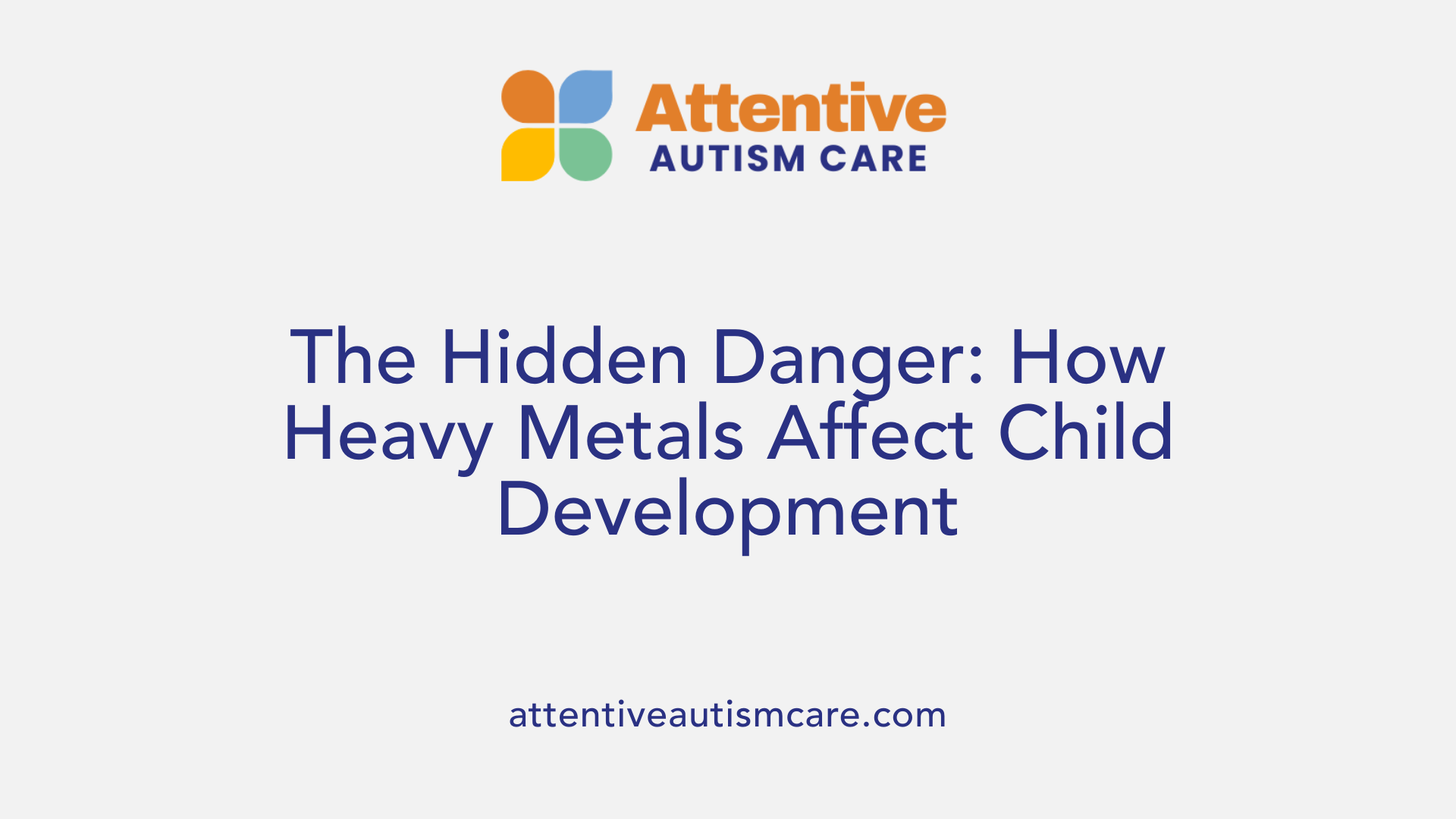
What are the potential developmental impacts, such as autism and ADHD, linked to heavy metal exposure from baby food?
Heavy metal exposure from baby food has raised serious concerns due to its association with various neurodevelopmental disorders. Multiple scientific studies and government reports highlight the risk of conditions like autism spectrum disorder (ASD) and attention deficit hyperactivity disorder (ADHD). Children exposed to high levels of heavy metals such as lead, arsenic, mercury, and cadmium often exhibit cognitive and behavioral issues later in life.
In particular, lead is strongly linked to developmental delays, lower IQ, and behavioral problems. Research shows that even low levels of lead exposure can impair brain development, affecting learning, memory, and attention. Manganese, while necessary in small quantities, can become neurotoxic at higher concentrations, potentially leading to motor and cognitive disturbances.
The exposure to multiple metals can amplify these risks. For example, combined contact with arsenic and lead may have a compounding effect on neurodevelopmental health. Methylmercury, mainly acquired through fish consumption during pregnancy, has also been associated with neurocognitive deficits, including impairments in language, coordination, and executive functions.
Bioaccumulation of these metals in the body allows them to cross the blood-brain barrier, especially in children whose brains are still developing. This leads to lasting damage through mechanisms like oxidative stress, mitochondrial dysfunction, and epigenetic changes that influence gene expression related to neurodevelopment.
Overall, the evidence indicates that early exposure to these neurotoxins during infancy can disrupt normal brain development, increasing the risk of autism, ADHD, and other cognitive and behavioral challenges. Minimizing exposure to contaminated baby foods has become a critical public health concern, prompting legal actions and regulatory reviews.
How do heavy metals impact the developing brain?
Heavy metals interfere with normal brain development through various biological mechanisms. They generate oxidative stress, leading to cellular damage within neural tissues. They can disrupt neurotransmitter functions and interfere with crucial signaling pathways in the brain.
Additionally, heavy metals like lead and arsenic can cause epigenetic modifications—changes in gene expression without altering DNA sequences—that may have long-lasting effects on neural plasticity and cognitive functions.
The neurotoxic effects are most harmful during critical periods of brain development in infancy and early childhood, when neural circuits are forming rapidly. Exposure during these stages can result in persistent neurobehavioral deficits, observable as learning disabilities, social challenges, and behavioral disorders.
Long-term consequences
The long-term impact of heavy metal exposure involves lifelong neurodevelopmental challenges. Children with early exposure may face ongoing difficulties with learning, memory, attention, and social interactions.
Research indicates that these children are at higher risk for developing chronic conditions such as autism spectrum disorder, ADHD, and other cognitive impairments. The effects can also influence immune function, increase susceptibility to mental health issues, and elevate the risk of certain cancers later in life.
Legal cases and scientific studies continue to build the case that preventing heavy metal exposure in infancy is crucial for protecting children’s future health. Regulatory efforts and lawsuits aim to hold manufacturers accountable for the contamination in baby foods, ensuring stricter safety standards and reducing the risk of lifelong neurodevelopmental harm.
Legal Options for Families Affected by Heavy Metal Exposure
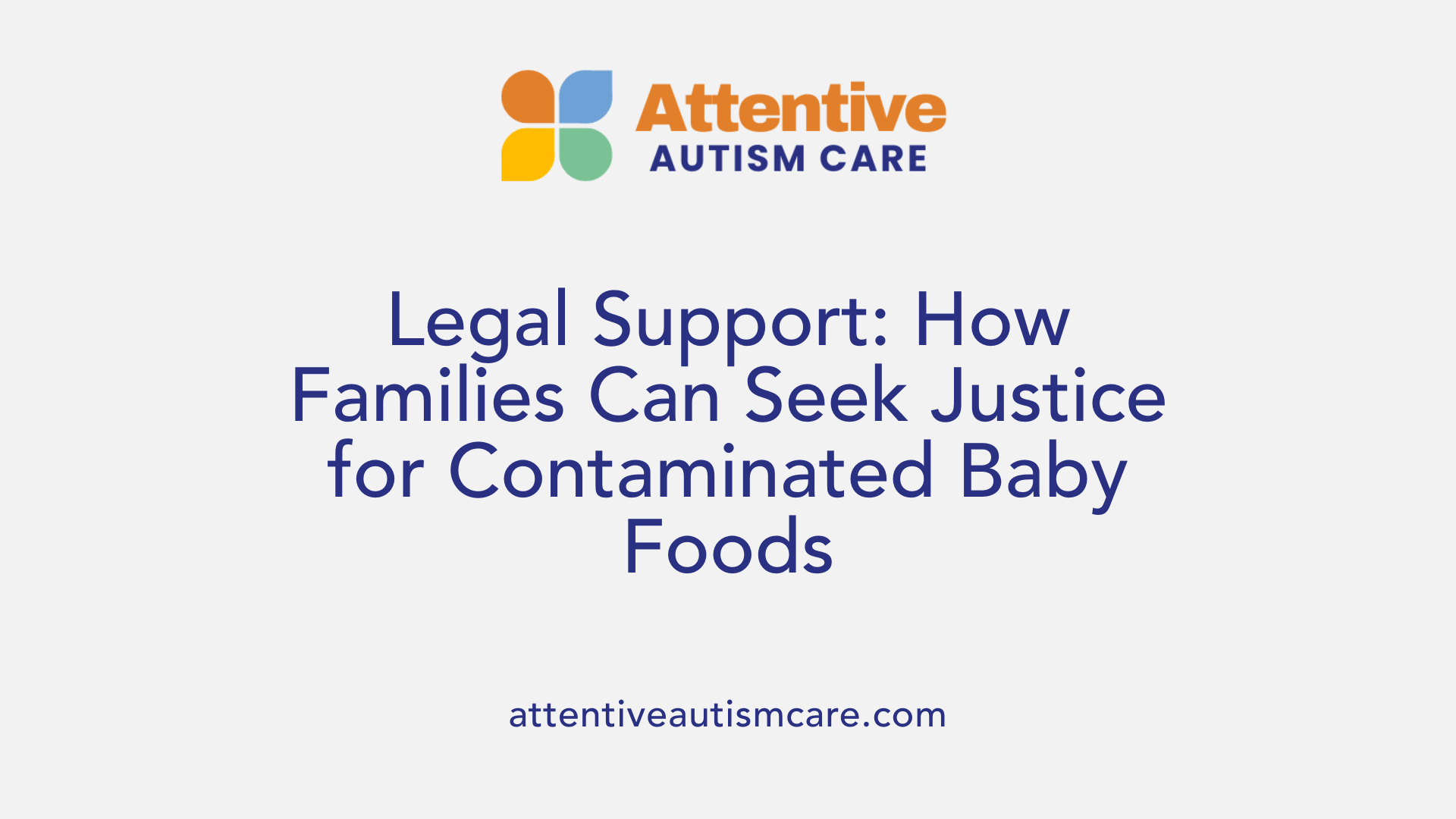
What legal options do affected families have if their child has developed autism or other conditions due to contaminated baby food?
Families whose children have been diagnosed with autism or other neurodevelopmental disorders potentially linked to heavy metal contamination in baby foods have several pathways to seek justice and compensation.
One of the primary options is filing lawsuits against the companies responsible for manufacturing and selling contaminated products. These lawsuits aim to hold corporations accountable for knowingly or negligently selling baby foods that contained dangerous levels of heavy metals such as arsenic, lead, cadmium, and mercury. The legal claims often include demands for damages related to medical expenses, ongoing healthcare costs, loss of income due to caregiving responsibilities, and emotional distress.
Many of these cases are part of broader legal actions, including mass tort litigations and class action suits. An extensive multidistrict litigation (MDL), known as In re: Baby Food Products Liability Litigation, is currently underway in the Northern District of California, consolidating hundreds of claims against major companies like Beech-Nut, Gerber, Walmart, and others.
If your child has been affected, it is essential to gather comprehensive evidence. This includes medical records that document the diagnosis, proof of purchase of the implicated baby foods, and details about the specific products consumed. Moreover, understanding the statutes of limitations in your state—time limits for filing legal claims—is crucial to ensure that your case is properly filed and considered.
Consulting a qualified attorney who specializes in toxic exposure or consumer protection cases can significantly benefit affected families. An experienced lawyer can evaluate the strength of your case, help gather necessary evidence, navigate complex legal procedures, and work toward maximizing your potential compensation.
Legal actions not only aim to recover damages but also serve to hold corporations accountable, potentially prompting stricter safety standards and greater transparency for the future of baby food production.
Regulatory Measures and Governmental Responses
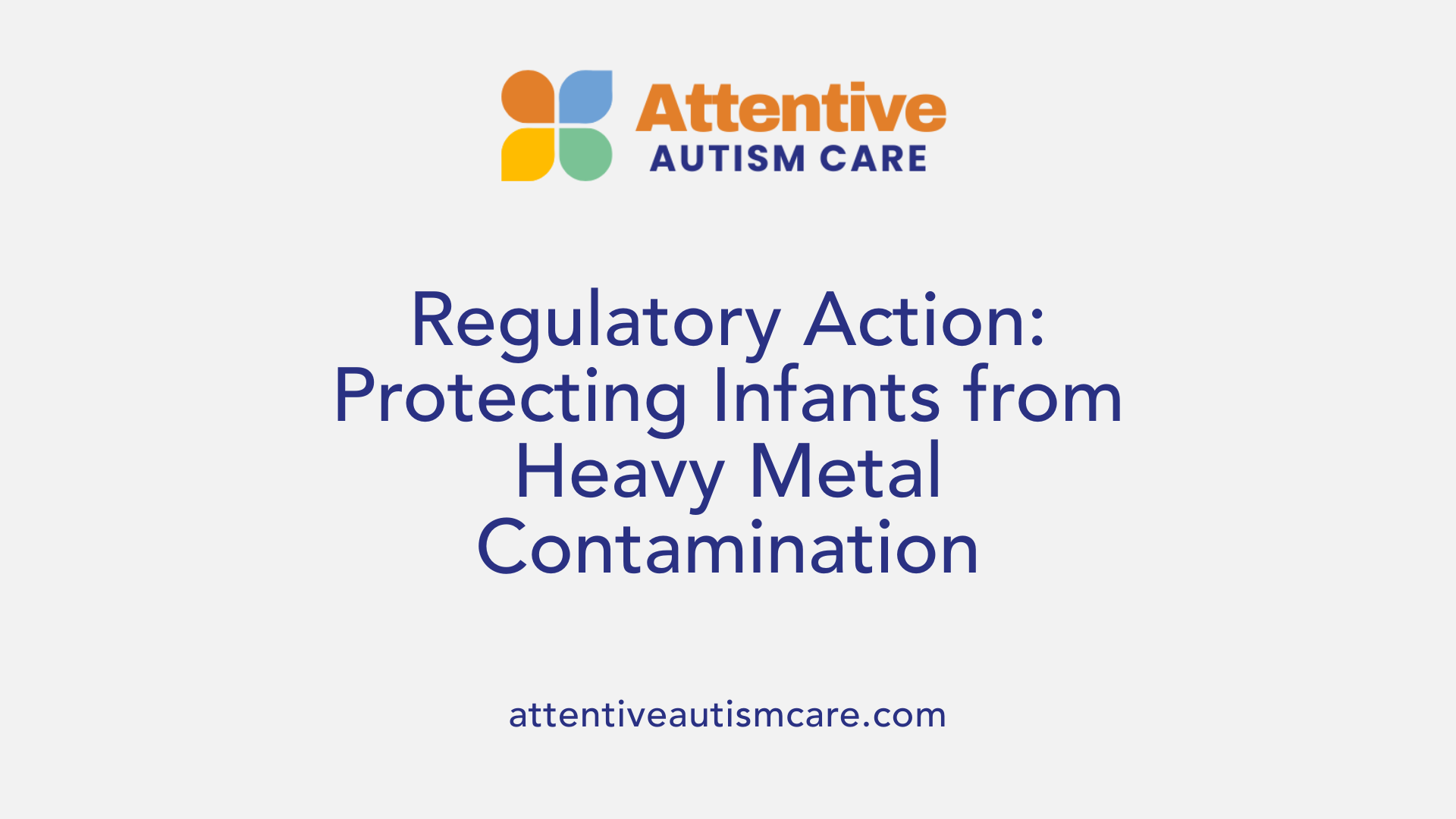
What regulatory measures have been implemented or proposed to address heavy metal contamination in baby food?
Addressing the presence of heavy metals in baby foods has prompted various government and regulatory actions focused on establishing safety standards, increasing transparency, and encouraging safer manufacturing practices.
The U.S. Food and Drug Administration (FDA) plays a central role in regulation. Under the Federal Food, Drug, and Cosmetic Act, the FDA oversees infant formulas and similar products, ensuring they meet safety and quality standards. The agency has implemented guidelines concerning labeling, quality control, and manufacturing practices. This includes ongoing efforts to finalize new regulations on good manufacturing practices and record-keeping processes.
One of the FDA’s significant initiatives is the 'Closer to Zero' strategy. This program aims to reduce exposure to toxic metals in baby foods by establishing non-binding action levels. Currently, the FDA recommends a maximum of 10 parts per billion (ppb) of lead for most baby foods and 20 ppb for specific categories such as root vegetables and dry cereals. The guidance encourages manufacturers to voluntarily lower metal levels in their products, promoting a gradual reduction of exposure risks.
State-level measures also contribute to regulation. California, in particular, has introduced legislation such as Assembly Bill 899, which imposes testing and disclosure requirements. This law mandates that baby food companies test their products for heavy metals, including lead, cadmium, arsenic, and mercury, on at least a monthly basis. Starting in 2025, companies must publicly disclose their test results, enhancing transparency and accountability.
Proposed safety standards continue to evolve, aiming to set enforceable limits on heavy metal content. While the FDA’s current guidance levels are voluntary, discussions are ongoing about establishing more permanent and strictly enforced limits based on emerging scientific evidence.
These concerted efforts by federal and state agencies reflect a broad recognition of the risks posed by heavy metals and the urgent need to protect vulnerable infants. By setting safety benchmarks, promoting transparency, and supporting safer manufacturing, these measures aim to significantly reduce heavy metal exposure during critical developmental periods.
Educational Resources and Public Awareness Campaigns
What are some educational resources available to increase public awareness about heavy metals in baby food and associated health risks?
Raising awareness about the dangers of heavy metals in baby foods is crucial for protecting children's health. Several authoritative sources provide valuable educational materials and guidance for parents, caregivers, and the public.
One of the primary sources is public health advisories and research reports from agencies like the Food and Drug Administration (FDA) and the American Academy of Pediatrics (AAP). These organizations offer updates on contamination levels, safety guidelines, and recommendations for reducing exposure.
Scientific research articles and government-funded reports help to deepen understanding of how heavy metals like arsenic, lead, cadmium, and mercury contaminate infant foods. These studies often include data on contamination sources, health effects, and mitigation strategies.
Consumer advocacy groups and organizations dedicated to food safety and children's health play a vital role by providing practical guides and educational campaigns. They advise parents on how to read labels carefully, select safer food options, and diversify diets to minimize heavy metal exposure.
The FDA’s 'Closer to Zero' initiative is an example of a comprehensive plan aimed at reducing heavy metal levels in foods for infants and young children. This program offers updated safety standards, testing results, and consumer guidance.
Governmental reports, such as the 2021 Congressional investigation, have shed light on widespread contamination and prompted further public education efforts. These official documents serve as credible sources for ongoing safety concerns and regulatory actions.
Community outreach and informational campaigns extend these efforts by organizing webinars, seminars, and local workshops. These programs are designed to empower parents, caregivers, and community members with knowledge on preventing heavy metal exposure.
Additionally, websites like the LawSuit Information Center provide not only legal updates but also scientific references and educational content aimed at informing families about potential risks and legal rights.
In summary, available educational resources include:
| Resource Type | Description | Benefits |
|---|---|---|
| Official advisories (FDA, AAP) | Public health updates and safety recommendations | Authoritative, data-driven guidance |
| Scientific research | In-depth analysis of contamination levels and health impacts | Informed decision-making |
| Advocacy group guides | Practical tips for safer food choices | Empowerment for consumers |
| Government programs (Closer to Zero) | Policies aimed at reducing heavy metals | Improved safety standards |
| Community outreach | Local workshops and webinars | Direct education and engagement |
By utilizing these resources, parents and caregivers can stay informed about the risks associated with heavy metals in baby foods and take proactive steps to protect their children’s health.
Ensuring Safer Infant Food Through Action and Awareness
The mounting evidence linking heavy metals in baby food to serious health and developmental issues, including autism, underscores the urgent need for comprehensive regulatory reforms, public education, and vigilant legal accountability. Families affected by these contaminants have legal avenues to seek justice, and collective advocacy can drive policy changes to ensure safer products. As research continues to illuminate the scope of this crisis, consumers, health professionals, and policymakers must work together to safeguard the well-being of the most vulnerable—our children.
References
- Baby Food Autism Lawsuit | New July 2025 Update
- Toxic Baby Food Lawsuit | Get Help Filing Your Claim
- Baby Food Autism Lawsuit - July 2025 Update | King Law
- Toxic Baby Food Lawsuit | Autism & ADHD Legal Claims
- Walmart Baby Food Lawsuit - July 2025 Update | King Law
- What Do I Need to Know About the Lawsuit Against Baby Food?
- Several companies must face lawsuit over tainted baby food, US ...
- Baby Food Autism Lawsuit | New July 2025 Update
- Several companies must face lawsuit over tainted baby food, US ...
- A Narrative Review of Toxic Heavy Metal Content of Infant and ...




































































































